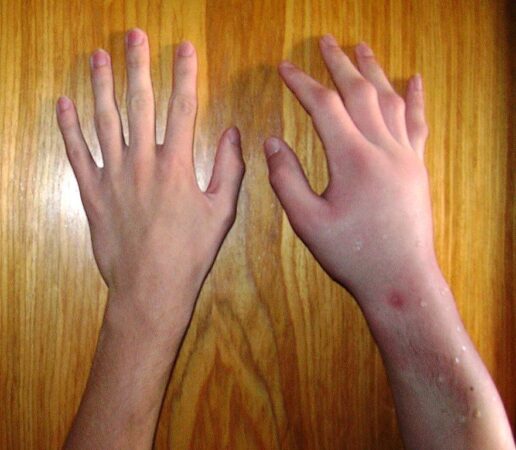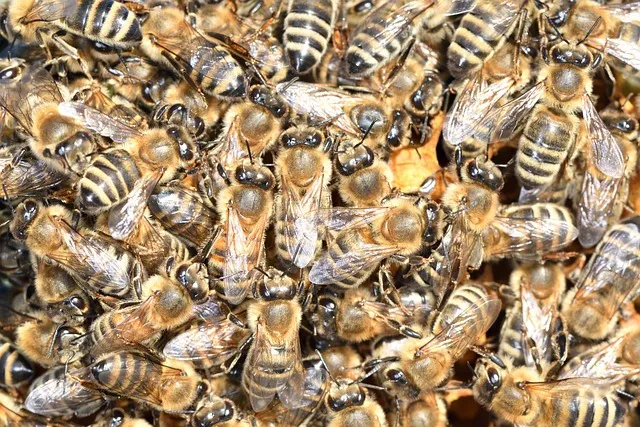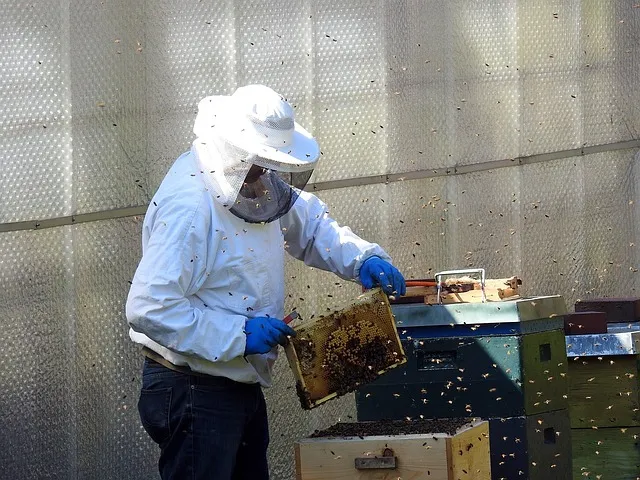What does a bee sting look like in the skin? How to remove it?
A bee sting is painful, and no one is ever prepared for it. It can be frightening since it happens out of the blues and fast. One minute you are peacefully enjoying a warm summer day; the next minute, you are writhing in pain. It is one of those outdoor menaces that we detest.
Although a sting inflicts some pain, the most tremendous pain originates from the released bee’s venom. Removing the stinger promptly helps to minimise the effect of the sting. For most people, a home ready will work just well to manage the resulting pain and irritation, but immediate medical help will be required for allergic individuals.
Similar Articles you may like to read –
What Does a Bee Sting Look Like the Next Day?
How many bees can kill a human? if sting together
Do beekeepers live longer?
Why are beekeepers not stung?
What does a bee sting look like in the skin?
Honey bees leave a barbed stinger on your skin. It is easy to recognise a bee sting embedded in your skin because it appears as a black filament that sticks out at the centre. The affected area turns red, painful, and may swell and become itchy in a usual reaction.
How to Remove a Stinger
Inspect the sting
After examining the stung zone, you need to act fast if you realise the stinger is present.
Pull the skin-tight
If the skin around the affected area is loose, pull it tight. A taut skin on the stung area will help you have a more detailed look at the stinger and make it easier to remove it.
Pull out the Stinger
It is advisable to remove it using a dull-edged object such as a blunt knife, a credit card, or even scratch it with your fingernail.
Reactions of a Bee Sting
Symptoms from a bee sting depend on the venom that has been released into your immune system. There is no cause of alarm if these symptoms are localised at the sting zone. Reactions on other body parts may signify a whole-body reaction that calls for emergency treatment. Most people only realise they are allergic after they are stung.
Mild Bee Sting Reactions
- Instant and intense pain
- Itchiness
- Swelling at the site
- Redness
Signs of an Allergic Reaction
- Shortness of breath
- Nausea
- Dizziness
- Loss of consciousness
- Swelling on lips and tongue
- Diarrhoea
- Hives
- Drop-in blood pressure
Why a Bee Stinger Remain Lodged in Your Skin
Honey bee stinger has big barbs that get stuck in your skin. It is ripped from its body with venom sacs as it tries to pull it out.
How soon should you remove a bee sting?
You should remove a bee stinger from your skin as fast as possible. While in your skin, it continues to pump toxins into your body. The longer it is lodged into your body, the more venom and consequences get into your body. It may also increase the risks of an allergic reaction.
Do all bee species and Insects leave stingers in your skin?
Only those insects with barbed stings leave them behind. This makes a tiny percentage of bee species, including the honey bee. Wasps, bumblebees, and hornets have smooth stingers that they pull out easily after their revenge mission. They can sting you multiple times. Yellowjackets have stingers with tiny barbs, and they withdraw them with ease.
Why Do Bees Sting People and other Animals
A honey bee is not aggressive and will only sting when it feels threatened to defend itself or the colony. If you keep off its lane, you will save yourself from the painful sting. However, it may happen accidentally by walking barefooted or plucking or sniffing a flower.
Treating a Bee Sting
Avoid panicking
It is very tempting to scream since it occurs suddenly and inflicts much pain. Calmness will avoid additional stings from other bees. Some bees can sting more than one time. You should also walk away from the scene; a sting and a dead bee release some pheromones that may attract the colony mates. (A honey bee perishes after stinging)
Remove the Stinger
Carefully remove the stinger with a blunt object.
Clean the Area with Clean Water and Soap
It removes the venom residues and prevents further infection risk
Apply a Cold Pack
Ice minimises the body’s inflammatory response. It is advisable not to place a cold pack directly on the skin. Be sure to wrap it in a clean cloth and then put it on the sting location.
Take a Pain killer
Take an over-the-counter pain killer such as ibuprofen or acetaminophen to subsidise the pain. You can also consider an antihistamine to ease swelling and itching.
How to Protect Yourself if You are Allergic to Bees
If you are allergic to bee stings, carry epinephrine in your pocket or bag. It can save your life. It is used to treat severe anaphylaxis. Most people don’t realize they are allergic until they get stung.
More articles you may like to read –
How to get rid of Hives? On arm? Should it be removed Overnight?
Can a queen bee hurt you? What happens if a queen bee stings you?
What happens if you crush a bee?
What animal kills bees?
FAQs
Which is more painful, a sting from a bumblebee or a honey bee?
Bumblebees have more painful stings than honey bees, although less aggressive. Again they can sting you multiple times.
If l am allergic to bee stings, l am also allergic to wasp stings?
Wasps and bees have slightly different venoms, so the impact on both may vary. If you are allergic to bees stings, you may not be allergic to wasps or hornet stings.
How do you treat multiple stings?
Multiple stings mean more accumulation of venom in your body and more pain. The accumulation of toxins may trigger an allergic reaction. Emergency help is essential.
What happens if you let the bee stinger remain in your skin?
Venom will continue to be pumped into the body. You will increase the chances of infection.
What are the home remedies that l can use for a bee sting?
There are many remedies within your reach that you can employ to ease the symptoms caused by bee stings. Some of these include honey, toothpaste, ice pack, baking soda, calamine lotion, and apple cider vinegar.



